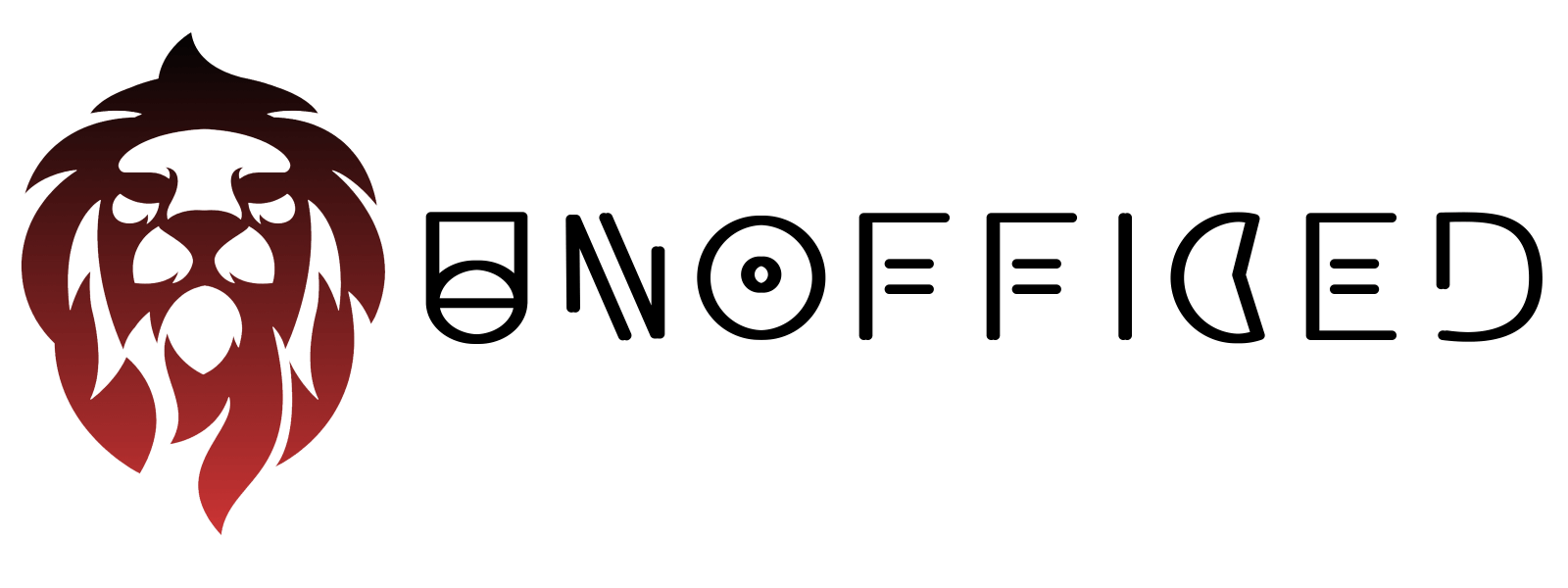Fibonacci Levels
- What Fibonacci is.
- Why Fibonacci levels work
- What retracement levels are and how they can be used.
- What extension levels are and how they can be used.
- How Fibonacci levels can be used for trading.
The Fibonacci Tool
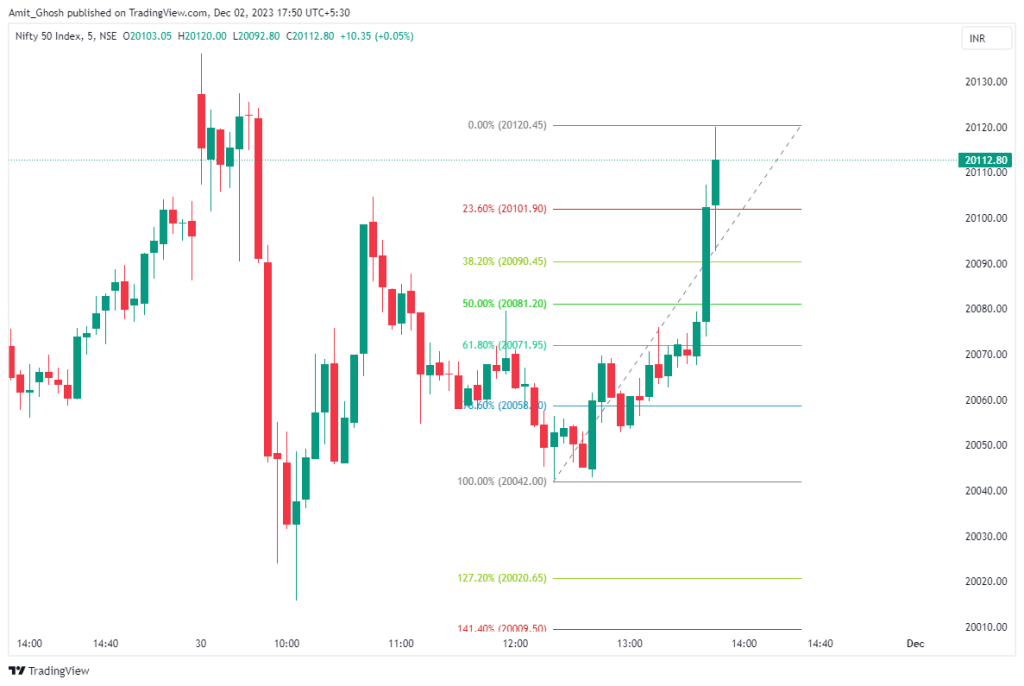
The Fibonacci tool makes use of the premise that after an uptrend, price will retrace by a certain percentage of the original price movement before continuing on in the original direction.
So, in an upward movement, the price will retrace back down by a certain amount before continuing on up.
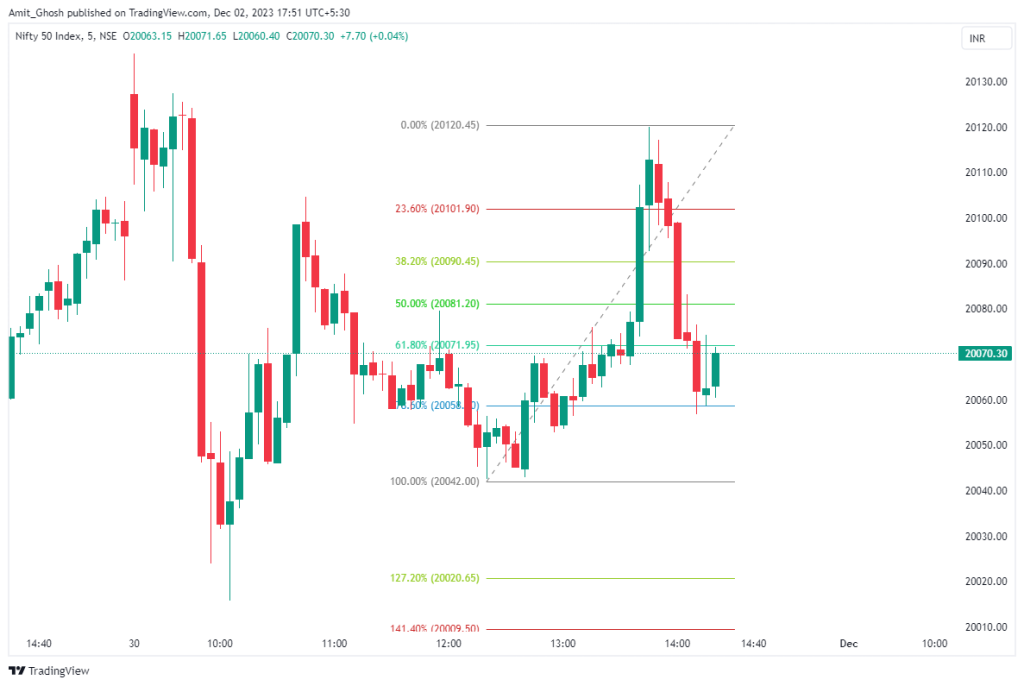
In this example, You can see the price has retraced 78.6% from the peak of the swing high.
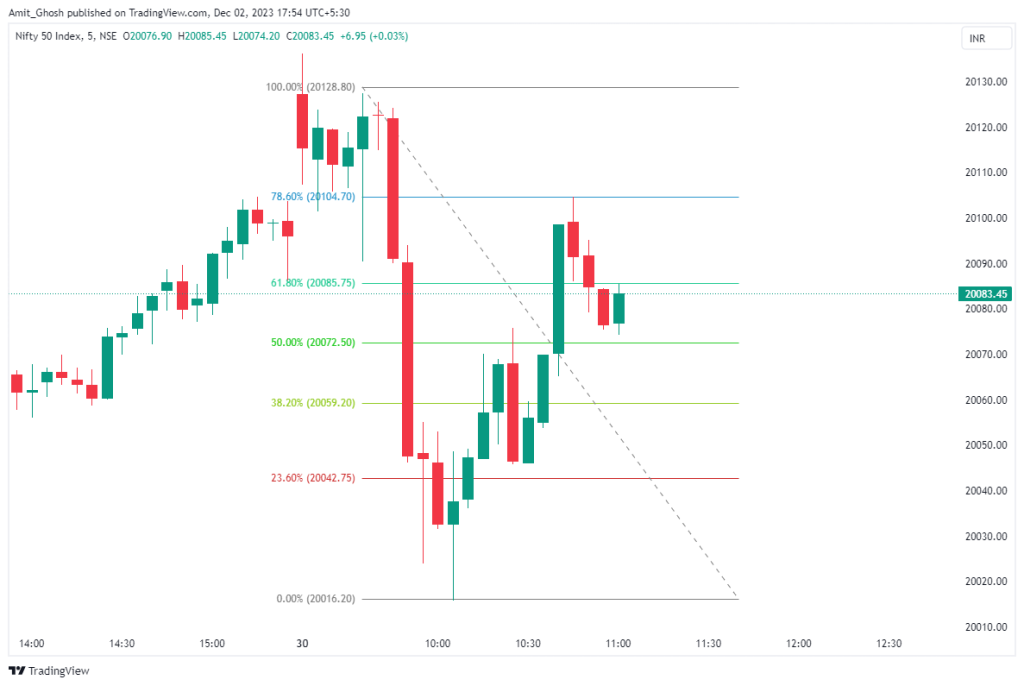
The underlying principle is that after a significant price movement, the market will often retrace or continue by a Fibonacci ratio before resuming its original direction.
Mathematical Calculations:
- Starting with the Sequence: The Fibonacci sequence starts with 0 and 1, and each subsequent number is the sum of the two preceding ones (0, 1, 1, 2, 3, 5, 8, 13, 21, 34, etc.).
- Key Ratios: The main Fibonacci ratios used in trading are 23.6%, 38.2%, 50%, 61.8%, and 100%. These ratios are derived from the relationships between numbers in the Fibonacci sequence.
- 61.8% (The Golden Ratio): This is the most famous Fibonacci ratio, often referred to as the ‘Golden Ratio’. It is found by dividing a number in the sequence by the number immediately following it. For example, 8 divided by 13, or 21 divided by 34, approximately equals 0.618, or 61.8% when converted to a percentage.
- 38.2%: This ratio is found by dividing a number in the sequence by the number two places to its right. For example, 8 divided by 21 equals approximately 0.382, or 38.2%.
- 23.6%: This is derived similarly, by dividing a number in the Fibonacci sequence by the number three places to its right. For instance, 8 divided by 34 is approximately 0.236, or 23.6%.
- 50% Level: Though not technically a Fibonacci ratio, the 50% level is often included in Fibonacci retracement tools due to its significance in trading and Dow Theory. It represents a simple halfway point.
- Extensions Beyond 100%: Fibonacci extensions involve ratios above 100%, like 161.8%, 261.8%, and 423.6%. These are found using similar division principles but extend beyond the immediate sequence.
Why Fibonacci Levels Work
Self Fulfiling Prophecy
Fibonacci levels tend to work very well because they are observed and used by many traders, making them a self-fulfilling prophecy.
Whenever the price reaches a Fibonacci level, traders will act accordingly by buying or selling, which strengthens these levels as stronger support or resistance.
How Fibonacci levels can be used for trading
Case for Uptrend
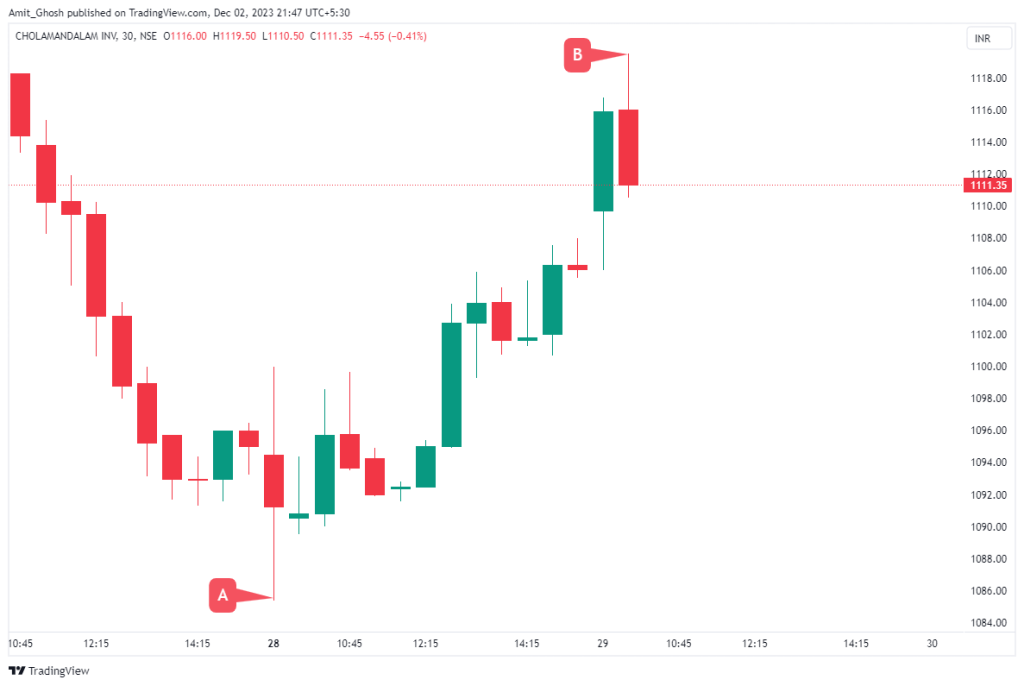
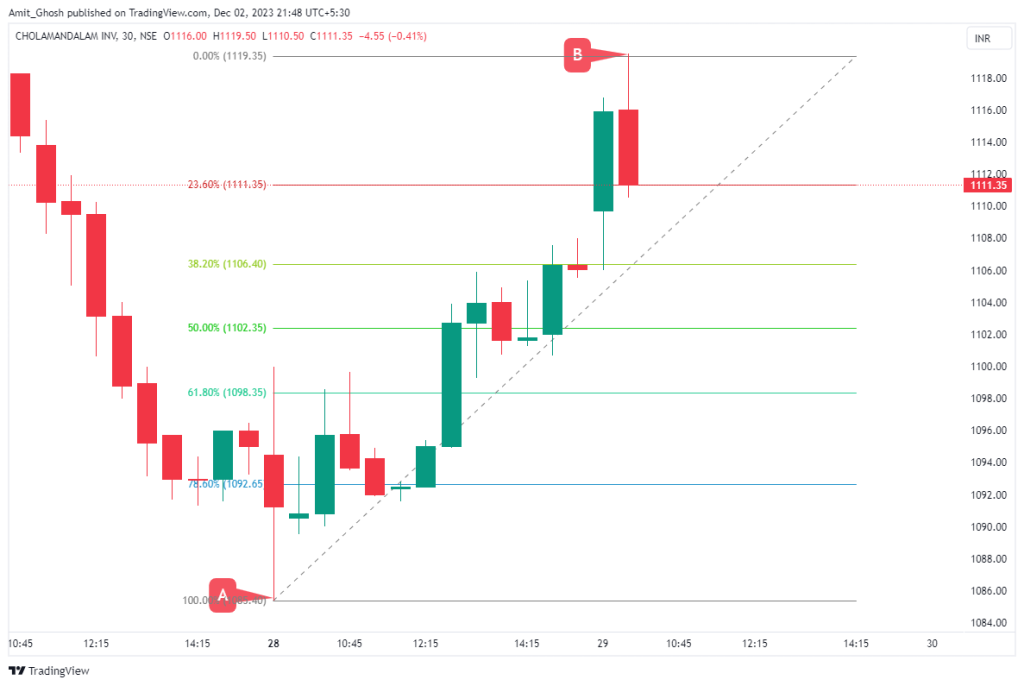
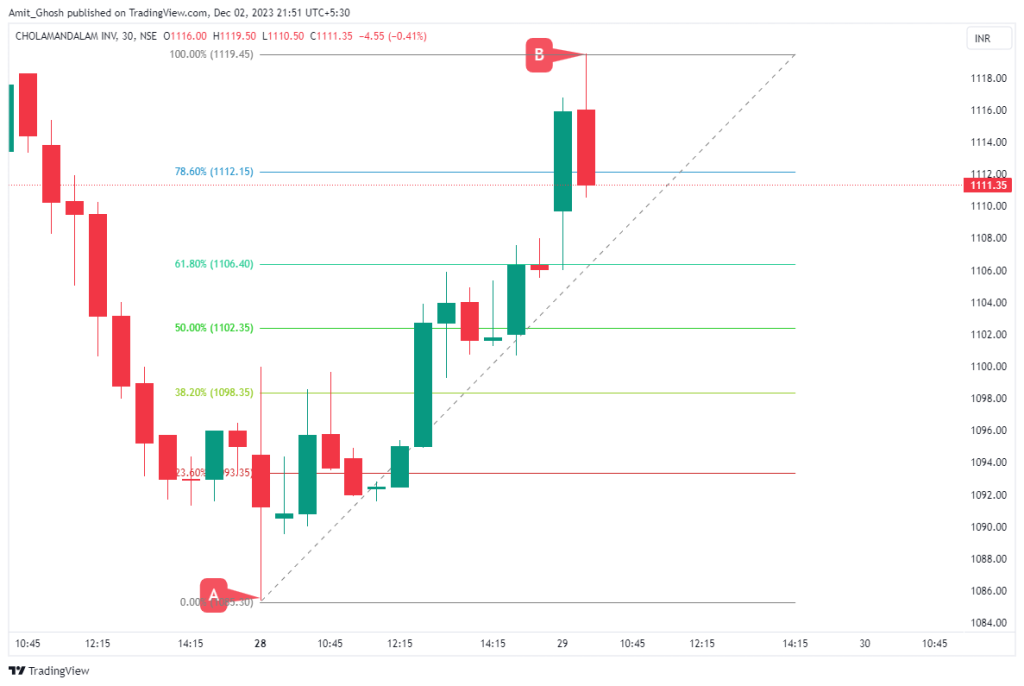
- The line at point B is the 0% line.
- The line at point A is the 100% level.

- Every line between 0% and the 100% is called a retracement level.
- Every line on the other side of the 0% level is called an extension level.

Case for Downtrend
- The line at point B is the 0% line.
- The line at point A is the 100% level.
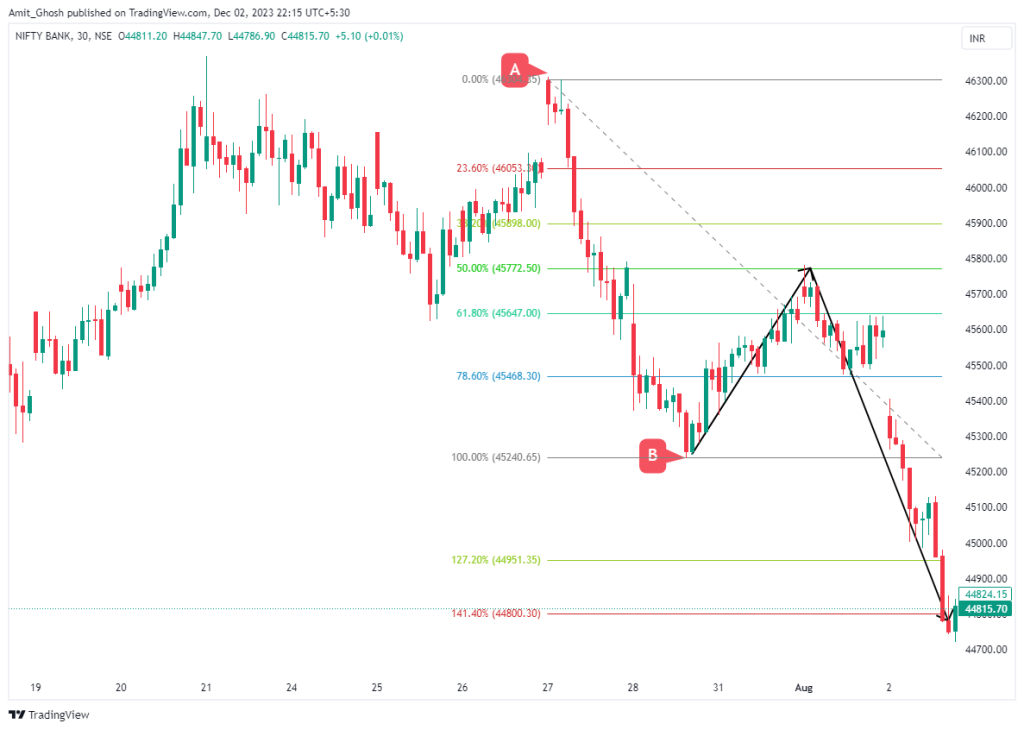
Fibonacci and SnR
It is important to note that Fibonacci levels also behave in the same way as normal support and resistance levels. And so support can become resistance and resistance can become support.
You can use the Fibonacci retracement levels for an entry into the market as the price comes back to them.
Entry in an Uptrend
- The entry can then be made and the stop loss can be set below the retracement level.
- You can take profit at one of the other Fibonacci levels.
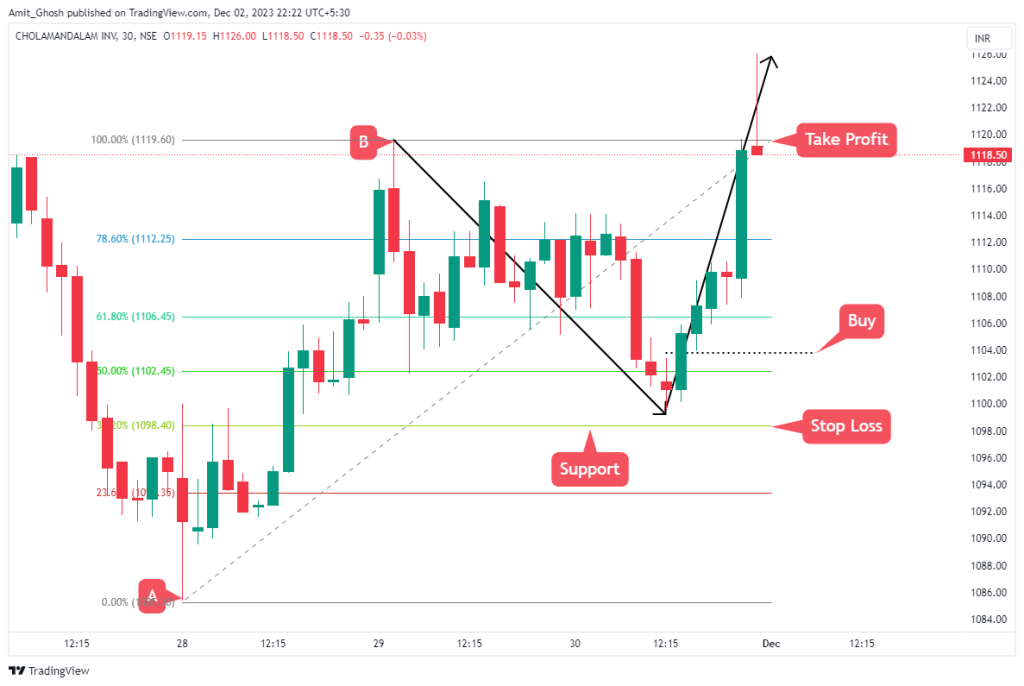
We shall discuss on how to use the Fibonacci tool for “target” in the later section. Meanwhile, although from the previous images, you can see that chola has went to 141.4% level, lets keep the target at 100% for this current discussion.
Entry in an Downtrend
In a downtrend, an entry could be taken after price has found resistance at one of the retracement levels. Traders can wait until price begins to move down in the same direction of the original downtrend.
Again, the entry is made with the stop loss above the retracement level and profit can be taken at another Fibonacci level.
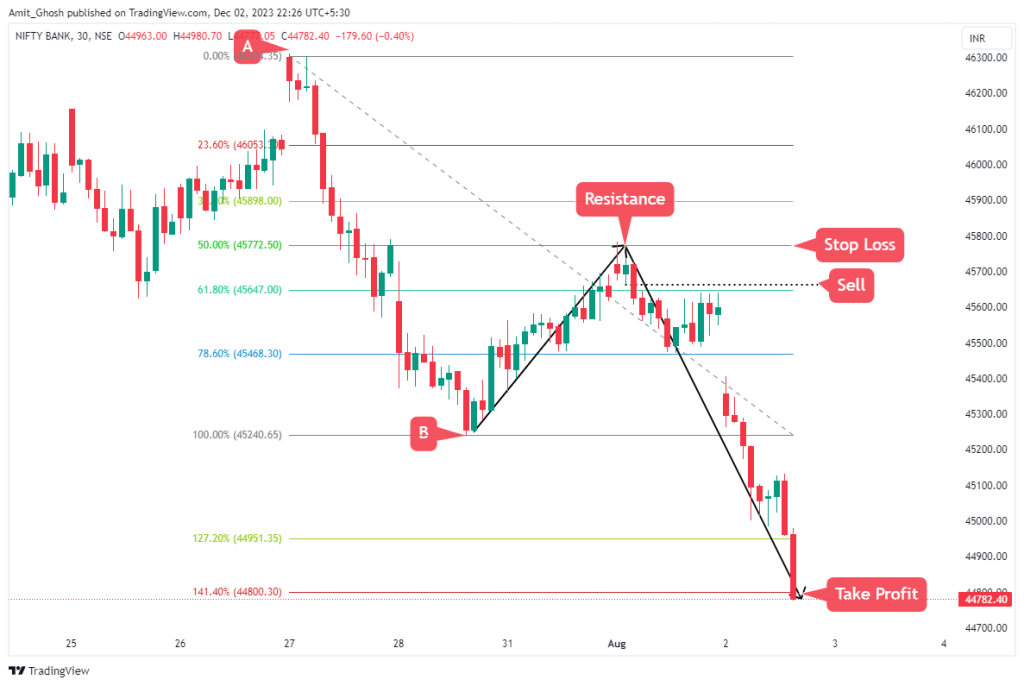
As usual, the target level has been written arbitrarily here.
Fibonacci Projections
- It has been observed that if price retraces to the 50% level or the 61.8% level, point C, it will often carry on to reach the 161.8% extension level, point D, if the market is in a confirmed trend.
- It has been observed that more often than not, when the price retraces to the 38.2% level, the price will reach the 138.2% extension level when the market is in a confirmed trend.
In the past two examples –
- Chola has retraced to 38.2% and went to 141.4%.
- BankNIFTY has retraced 50% and went to 141.4%
So, the profit targets should be adjusted to 138.2% for chola and 161.8% for BankNIFTY in the above cases following the rules of Fibonacci Projections.
Conclusion
- The Fibonacci tool can be used to draw support and resistance levels on your charts based on the Fibonacci number sequence.
- The Fibonacci tool is always applied from the left to the right-hand side of the price chart for both long and short trades.
- You also learned that retracement levels are commonly where traders look to enter the market.
- Extension levels are commonly placed where traders look to take profits.
- Furthermore, there is a correlation between the 38.2% retracement level and the 138.2% extension level, and between the 50% or the 61.8% and 161.8% levels.
Note on Aggression
- Aggressively entering as the price reaches each level. – We could enter at each retracement level, placing a stop loss on the opposite side of the Fibonacci level. If our stop loss is triggered, we simply re-enter at the next level and continue this process until the price moves in our favor. This is an aggressive approach to finding entries using the Fibonacci tool.
- Waiting until the price shows support or resistance at these levels before entering. – We wait until the price demonstrates support or resistance at these levels, then wait for the price to start moving back in the direction of the original trend before we enter.
